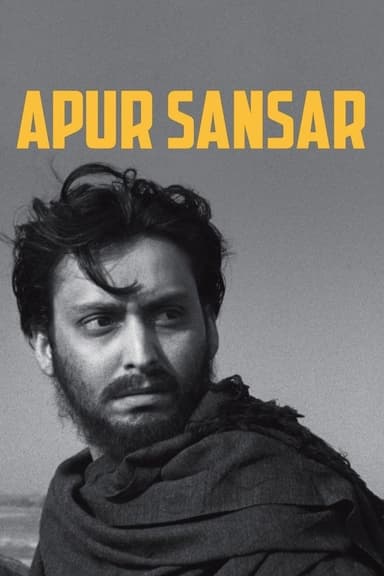
Aparajito
1956 • Drama
Apu and his family have moved away from the country to live in the bustling holy city of Benares. As he progresses from wide-eyed child to intellectually curious teenager, eventually studying in Kolkata, we witness his academic and moral education, as well as the growing complexity of his relationship with his mother.
Runtime: 1h 50m
Why you should read the novels
If Aparajito (1956) moved you, read the source novels by Bibhutibhushan Bandyopadhyay to experience Apu's world in fuller depth. The books Pather Panchali (Song of the Road) and Aparajito (The Unvanquished) reveal rich inner lives, cultural textures, and motivations that the film can only suggest. For anyone searching for Aparajito book or Pather Panchali novel, the original prose offers a more intimate journey.
In English translation, these classics expand the settings of rural Bengal, Varanasi, and Calcutta with detail you can linger over. You will follow Apu's curiosity, studies, and relationships with nuance, feeling the push and pull between tradition and modernity page by page. Buy or borrow the novels to see why the Apu Trilogy's emotional power began on the page.
Readers who enjoy comparing book vs movie will find Bandyopadhyay's storytelling unforgettable. The novels deepen the mother-son bond, broaden Apu's intellectual awakening, and unfold themes of loss, resilience, and self-discovery. Start with Pather Panchali, continue with Aparajito, and discover the original arc that inspired the cinema you love.
Adaptation differences
Scope and structure: The film Aparajito draws from the concluding material of Pather Panchali and the early chapters of Aparajito, then streamlines events into a tighter chronology. The novels cover a wider span of Apu's childhood and adolescence, offering additional episodes and transitions that the adaptation compresses or omits for narrative focus.
Point of view and interiority: On screen, much is conveyed through glances, gestures, and music. In the books, Bibhutibhushan Bandyopadhyay provides Apu's and Sarbajaya's thoughts, doubts, and private hopes, giving readers direct access to motivations and conflicts. The mother-son relationship, while poignant in the film, gains greater psychological shading and context in the prose.
Characters and episodes: The movie merges or trims secondary figures and condenses school and city-life passages to maintain momentum. The novels spend more time on Apu's studies, friendships, mentors, and the texture of life in Varanasi and Calcutta, including day-to-day details, small setbacks, and formative encounters that shape his outlook.
Arc and emphasis: Aparajito (1956) ends earlier than the full trajectory presented in the book Aparajito, emphasizing a bittersweet farewell and Apu's next step. The novel continues beyond that point into later stages of his young adulthood, material that the third film, Apur Sansar, eventually adapts. As a result, the film highlights maternal loss and transition, while the book presents a broader meditation on growth, urban alienation, and self-making.
Aparajito inspired from
Aparajito (The Unvanquished)
by Bibhutibhushan Bandyopadhyay
Pather Panchali (Song of the Road)
by Bibhutibhushan Bandyopadhyay







